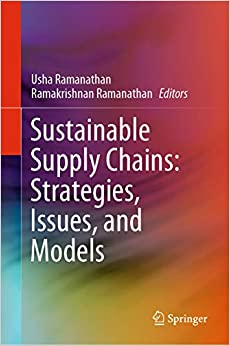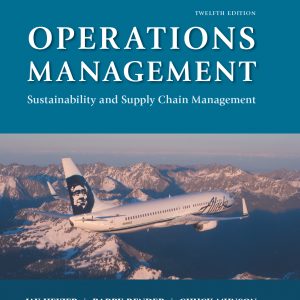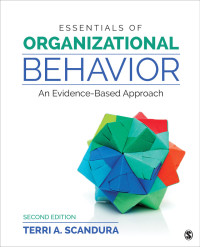This book discusses supply chain issues and models with examples from actual case studies. Recent advances in sustainability, supply chains and technologies have brought promising potential for the management of sustainable global and local supply chains. While most of the current literature seem to consider developments in the field of sustainable supply chains and in the field of Industry 4.0 as two distinct entities, this book attempts to explore the synergy in bringing these two distinct fields together.
The book features chapters on management of sustainability and industry 4.0 on supply chains as a whole, with several case studies on issues related to the application of sustainable supply chains in specific application sectors. They employ mathematical modeling and statistical analyses, as well as descriptive qualitative studies. They cover a range of application areas including multiple sectors (restaurant, manufacturing, logistics, furniture, food and insurance), domains (supply chains, logistics, marketing, and reverse logistics) and multiple country contexts (UK and India). The potential links between sustainability and the recent technological innovations from Industry 4.0 have been explored in detail.
The book offers a valuable tool for managerial decision-making on the current practice and future potential on the use of Industry 4.0 tools for sustainable supply chains to facilitate competitive advantage with case studies in various industry sectors. In addition, some intriguing mathematical models will appeal to students and researchers interested in modeling the logistics process and the application of evolutionary game theory for integrating the social and economic aspects of sustainable supply chains. Some of these supply chain issues have been addressed in a previous book by the Editors.
The book features chapters on management of sustainability and industry 4.0 on supply chains as a whole, with several case studies on issues related to the application of sustainable supply chains in specific application sectors. They employ mathematical modeling and statistical analyses, as well as descriptive qualitative studies. They cover a range of application areas including multiple sectors (restaurant, manufacturing, logistics, furniture, food and insurance), domains (supply chains, logistics, marketing, and reverse logistics) and multiple country contexts (UK and India). The potential links between sustainability and the recent technological innovations from Industry 4.0 have been explored in detail.
The book offers a valuable tool for managerial decision-making on the current practice and future potential on the use of Industry 4.0 tools for sustainable supply chains to facilitate competitive advantage with case studies in various industry sectors. In addition, some intriguing mathematical models will appeal to students and researchers interested in modeling the logistics process and the application of evolutionary game theory for integrating the social and economic aspects of sustainable supply chains. Some of these supply chain issues have been addressed in a previous book by the Editors.











